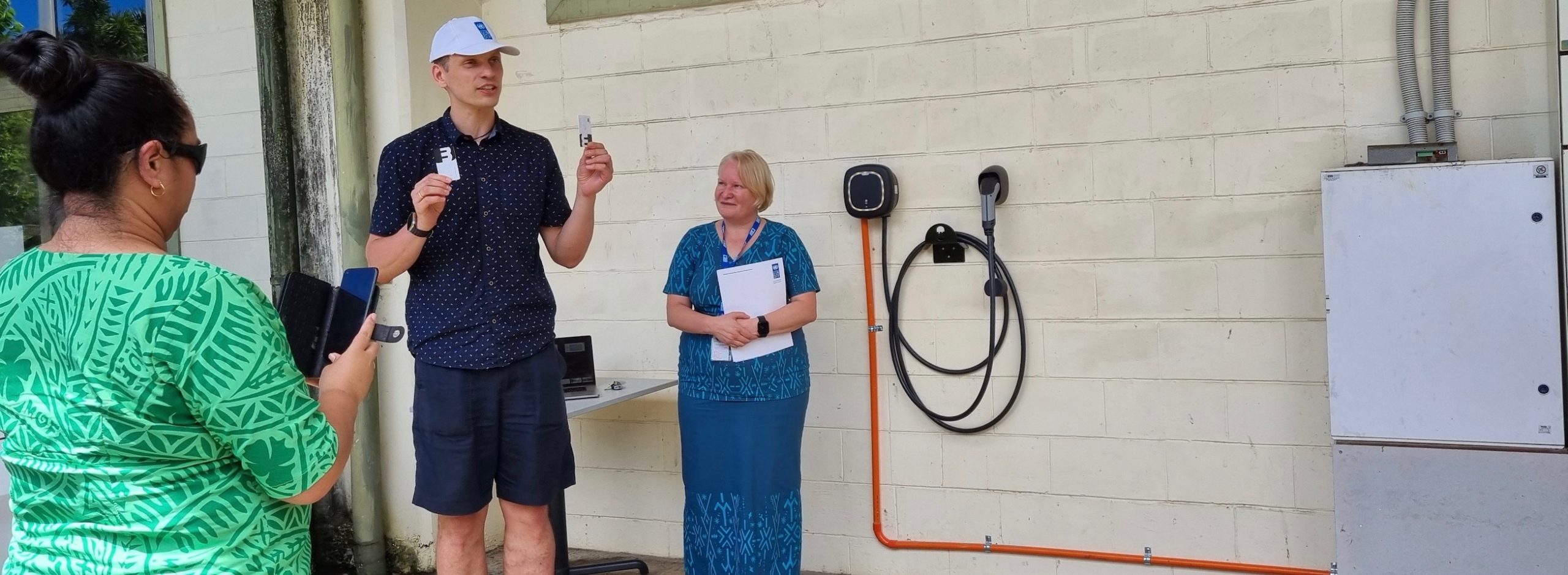The Climate Action Pathways for Island Transport: Land and Maritime
Decarbonisation Project, or CAP-IT, is gaining momentum with the demonstration today of how
electric vehicle (EV) charging stations work.
The demonstration was held at the One UN House, Tuanaimato, where an existing EV charging
station was previously installed under the United Nations Development Programme’s Greening
Moonshot Initiative, an internal effort by UNDP worldwide to reduce its carbon footprint.
Today’s demonstration provided an in-depth look at EV fleet management and monitoring
solutions, as well as the usage and operationalisation of EV charging stations.
UNDP’s Systems Engineer, Peter Lusis, presented this for members of the project’s Technical
Advisory Group, led by the Ministry of Works, Transport and Infrastructure, and comprised of the
Ministry of Foreign Affairs and Trade, Ministry of Finance, Ministry of Natural Resources and
Environment, Ministry of Agriculture and Fisheries, Land Transport Authority, Electric Power
Corporation, National University of Samoa, and the Samoa Qualifications Authority.
A representative of the local EV vendor, Ford-Hyundai, was also on hand to answer technical
questions concerning EVs.
The CAP-IT project marks a crucial initial stride in our journey towards a transport sector less
reliant on fossil fuels. As we accelerate the decarbonisation of land and maritime transport, we're
not only combating climate change, but also promoting cleaner air and improved public health.
This project lays the groundwork for our transition from fossil fuels to low-carbon solutions. Moving
forward, our focus will extend to developing a comprehensive strategy for this transition, perhaps
prioritizing public transport as the next frontier in our efforts, said Aliona Niculita, UNDP Resident
Representative.
The CAP-IT Project is funded by the Government of Japan, and is implemented by the
Government of Samoa in collaboration with UNDP. It aims to accelerate the decarbonisation of
Samoa’s land and maritime transport sectors. It’s primary goal is to facilitate the adoption of
MEDIA RELEASE
electric vehicles to support Samoa’s Nationally Determined Contributions (NDCs) for the energy
and transport sectors by 2030.
Dedicated charging stations for government electric vehicles will be installed at the Tuanaimato
bowser site and several other locations, while charging stations available to the public are planned
to be installed across both Upolu and Savai’i.

